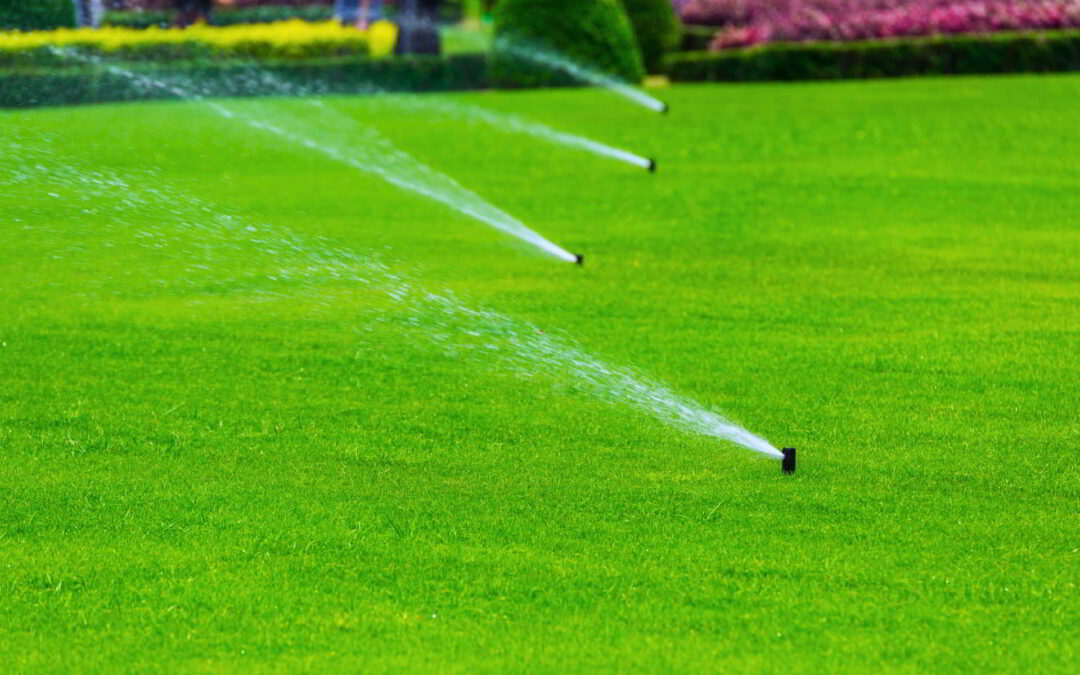Taking care of new sod requires attention to detail. Proper maintenance ensures the sod roots establish well and your lawn stays green and healthy. With the right care, your sod will thrive, looking lush and vibrant all year long. Knowing how to maintain your sod after installation is essential to keep it looking great and avoid costly replacements.
When maintaining sod, focus on a few key factors, such as watering, fertilization, mowing, and pest control. This guide will dive into each aspect, providing clear steps for successful sod care.
Watering schedule for new sod
A solid watering routine is the cornerstone of healthy sod. Watering your sod too little can cause it to dry out, while overwatering can lead to root rot. Striking a balance is critical. A well-maintained watering schedule ensures your new sod establishes deep roots and becomes resilient over time.
An example of this balance is seen with homeowners who installed sod in early spring and followed a strict watering schedule, achieving full lawn coverage in just weeks. Stick to a schedule to keep your sod healthy.
- Water sod daily for the first 2 weeks, keeping the soil moist but not saturated.
- After 2 weeks, reduce watering to 2-3 times per week.
- Water in the early morning or late afternoon to prevent evaporation.
Best fertilization tips for sod care
Fertilization is key to nourishing your sod and promoting strong, healthy growth. A proper fertilizer application gives your lawn the essential nutrients it needs, such as nitrogen, phosphorus, and potassium. However, too much fertilizer can cause burns, while too little can leave your sod malnourished.
For those experienced in sod care, they often notice the benefits of fertilization within just a few weeks, leading to a fuller and more vibrant lawn. Ensuring you choose the right fertilizer and apply it at the correct time is critical to success.
- Use a slow-release fertilizer after the first month of sod installation.
- Apply fertilizer 3-4 times per year for consistent growth.
- Always follow the manufacturer’s instructions to avoid over-fertilization.
How to prevent weeds in your sod
Weeds can quickly take over new sod if left unchecked. Preventing weeds from sprouting and spreading is an ongoing task but absolutely doable with the right techniques. The best way to avoid weeds is to create a healthy environment where sod grows thick, crowding out unwanted plants.
Weeds commonly infiltrate poorly maintained sod, especially if soil nutrients are uneven or if the sod is left dry for extended periods. Consistent care will significantly reduce weed problems.
- Apply a pre-emergent herbicide 2-3 weeks after installation.
- Mow your lawn regularly to keep weeds at bay.
- Pull any visible weeds by hand to prevent them from spreading.
Lawn mowing practices for sod health
Mowing your lawn is one of the most critical maintenance tasks to promote a healthy sod foundation. However, mowing too soon or cutting too much can damage your sod. Experienced landscapers recommend waiting until the sod is well-rooted before the first mow, ensuring that the lawnmower blades are sharp to avoid tearing the grass.
A real-world example involves homeowners who waited a full month before mowing their sod for the first time, which resulted in a healthier lawn with fewer bald patches. Proper mowing techniques will save your sod from unnecessary stress.
- Wait at least 3-4 weeks before the first mow.
- Keep your mower blades sharp to ensure a clean cut.
- Never cut more than one-third of the grass blade height at a time.
Importance of aerating your sod lawn
Aeration helps loosen compacted soil and allows air, water, and nutrients to reach the roots. This process is vital for sod maintenance, especially if your lawn experiences heavy foot traffic or clay-heavy soils. Aerating too early, though, can disturb the root system, so timing is everything.
People who regularly aerate their sod often see increased growth and greener grass in no time. The benefits of aeration can be substantial when done at the right intervals.
- Aerate your lawn once or twice a year, ideally in the fall or spring.
- Use a core aerator for the best results.
- Ensure the sod is fully established before aerating.
How to address sod diseases and pests
Diseases and pests can wreak havoc on your sod if not treated early. From fungal infections to insects like grubs, various factors can damage your new sod. Fortunately, many treatments and preventive measures can keep your lawn healthy and free from infestations.
Sod experts often deal with common problems like brown patches caused by overwatering or pests feeding on the roots. Recognizing these issues early can save your sod.
- Treat fungal diseases with a fungicide suitable for your grass type.
- Use insecticides to manage grubs and other pests that eat the roots.
- Keep your lawn well-maintained to avoid disease-prone conditions.
When to overseed your sod for a lush lawn
Overseeding is a practice used to thicken the lawn and fill in any bare spots. This method is particularly useful after the first year of sod installation, helping your lawn look lush and vibrant. Overseeding also helps combat weeds by ensuring the grass remains dense enough to crowd them out.
Landscapers often use overseeding as a way to extend the life of sod without needing complete replacement. This is a tried-and-true method for maintaining a picture-perfect lawn.
- Overseed once a year, typically in the fall.
- Water the lawn thoroughly after overseeding.
- Use a high-quality grass seed blend that matches your sod.
Signs your sod needs more water
Watering is a crucial part of sod maintenance, and knowing when your sod needs more water is key to keeping it green. Dry, crunchy blades or patches of brown grass often indicate that the sod isn’t getting enough hydration. Identifying these signs early can save your lawn from serious damage.
For instance, lawns that appear slightly blue or grey in color typically signal they need immediate watering. Stay vigilant and monitor the condition of your sod regularly.
- Look for curling or folding grass blades.
- Check for dry soil by inserting a screwdriver into the ground; it should penetrate easily if adequately watered.
- Watch for color changes, such as a dull blue-green hue.
Tips from Slidell landscapers for healthy sod maintenance
Professional landscapers in Slidell recommend a consistent and mindful approach to sod care. Their experience with maintaining lawns in the region highlights the importance of a tailored maintenance plan that considers weather patterns and soil conditions. Following expert advice leads to better results and ensures that your sod thrives year-round.
Landscapers often emphasize the importance of adapting your sod care routine to local weather, preventing water waste, and addressing issues like pests before they become serious problems.
- Adjust your watering schedule based on the season and weather.
- Consult a local landscaper for pest control options that suit your area.
- Use organic fertilizers to promote eco-friendly lawn care practices.
Key takeaways for sod maintenance from Slidell landscapers
Maintaining sod after installation requires a balance of watering, mowing, fertilization, and pest control. Keep your sod healthy by following a consistent care routine and adjusting as needed based on seasonal changes. Address problems like weeds, pests, and diseases early to prevent damage.
- Water daily for the first two weeks, then reduce frequency.
- Use slow-release fertilizer and overseed in the fall.
- Aerate once or twice a year and watch for early signs of disease.
Frequently Asked Questions
1. How soon can you walk on new sod?
It’s recommended to avoid walking on new sod for at least two weeks to allow the roots to establish properly.
2. What is the best time of day to water sod?
The best time to water sod is early in the morning and is acceptable late afternoon when temperatures are cooler and evaporation is minimized.
3. Can you mow sod too soon?
Yes, mowing sod too soon can damage the root system. Wait until the sod is well-rooted, usually 3-4 weeks after installation.
4. How do I know if my sod is getting enough water?
If your sod stays green and bounces back after being stepped on, it’s getting enough water. Dry patches or curling blades are signs it needs more water.
5. Do I need to fertilize my sod right after installation?
No, it’s best to wait at least four weeks before applying fertilizer to new sod to avoid stressing the grass.


